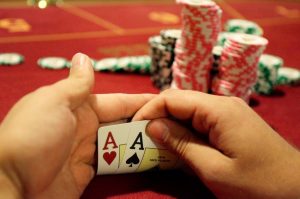 We can say that there are three main types of bluffs in poker: fundamental bluffs, game flow bluffs, and comfort zone bluffs.
We can say that there are three main types of bluffs in poker: fundamental bluffs, game flow bluffs, and comfort zone bluffs.
A fundamental bluff is used in situations where your opponent doesn't get good hands very often, but you do. In such situations, the opponent can't do much with their range, even if they sometimes know you're bluffing. A game flow bluff is a bluff based on the read that in this game flow situation, your opponent won't expect you to be bluffing. A comfort zone bluff is a bluff where the opponent's comfort zone prevents them from making the correct call. They might have strong enough hands to call and at some point, the game flow might even go against you, but you've read that this situation is within the player's comfort zone, so you can make frequent and effective bluffs.
Of course, in reality, bluffs are not only divided into these three categories. Most of them work at various levels or can work on two levels and completely fail on the third. These are just three primary directions where a bluff shows its effectiveness.
By incorporating all our observations, we can arrive at a two-part definition of a bluff. It goes like this:
“A bluff is the perception of situations in which to bluff, and the art of knowing in which of them your opponent will fold.”
The first part, knowing when to bluff, talks about attacking structurally weaker spots in the opponent's game and using fundamental, strong bluffs. This part of the bluff is the tactician in you, who studies various “technical drawings” and plans attacks.
The second part, the art of knowing when the opponent will fold, is a psychological game – understanding the opponent's psychology, comfort zone, and game flow. This allows you to choose the right time to bluff, precisely when the opponent will believe it and fold. This part of the bluff is the matador in you, connected with your senses and the rhythm of action, pulling out the red cape at the right moment. A masterful bluffer must master both parts.





